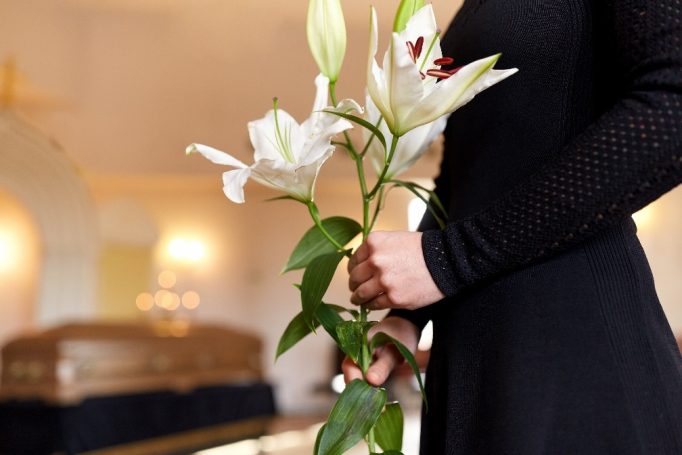
Although in recent years funerals in the UK have increasingly been seen as a celebration of life with people wearing bright colours or the favourite colour of the deceased, black still remains strongly associated with mourning across large areas of the world.
However, you may be surprised to learn that it is not the universal colour of mourning. There are many countries across the globe who use different colours as a symbol of grief. Here we discuss what colours people associate with mourning, where the traditions originated and how significant these colours are in the grieving process.
Black – Western World
Wearing dark colours for mourning has long been a tradition in many parts of the western world, in particular large parts of Europe and North America. The association of the colour black with death and loss is centuries old and is believed to have originated during Roman times. However, it was after the death of Prince Albert in 1861 when it gained popularity as part of funeral fashion. The grieving Queen Victoria wore black to signify that she was a grieving widow until her own death 40 years later. This led to people in the Victorian era wearing black for significant periods after their partner had died. It was social etiquette for the wife to wear black for 1-2 years after the death of her husband. For men, it was expected that they would wear black for 3-6 months instead. Black became popular not only in the clothes worn, but also the jewellery. Jet jewellery rose in popularity during Victorian times and worn as specific mourning jewellery and a way of remembering loved ones.
White – East Asia and Europe
White is meant to signify purity and rebirth and is a popular colour of mourning for many East Asia countries. It also has strong connections to Europe as well. Starting in France in the 16th century, white was worn by bereaved children and unmarried women. This trend was continued by royalty, as Mary Queen of Scots wore white after she lost several members of her family within a short period of time. Queen Victoria also requested that she had a white veil over her face for her funeral, after having worn black through the decades before.
Red – South Africa
Red is a controversial colour at funerals. In South Africa, red has been chosen as a colour of mourning to represent the apartheid era and the bloodshed during these years. However, in China red is a colour that is strictly forbidden at funerals.
Purple – Thailand and South America
Purple has long been associated with royalty and spirituality going back to ancient times. Catholics dress in purple robes during Easter celebrations to symbolise the pain and suffering of Christ’s crucifixion. In Brazil, Catholics wear black and purple as joint colours for grief and associate purple so strongly with mourning that it can be deemed unlucky to wear it at other occasions. In Thailand, purple is a mourning colour for widows only and all other guests wear black.
Although religion and tradition are still an important part of many funerals, there has been a step change in recent years towards personalised funerals which are a celebration of life. It may be the wish of the person who has died for mourners to wear bright colours, or the family may request you to wear a specific colour or ribbon in support of a charity. Usually, these details are supplied by the family or funeral director prior to the funeral.
If you – or somebody you know – has recently lost a close relative or friend and you have any questions about aspects of planning a funeral, please contact Cravens Funerals. Our compassionate and professional team have years of experience of creating funerals that are completely unique to the individual and respectful of the circumstances involved. For help and advice please contact us on 0151 228 3900 or leave us a message through our contact us page by clicking here.
